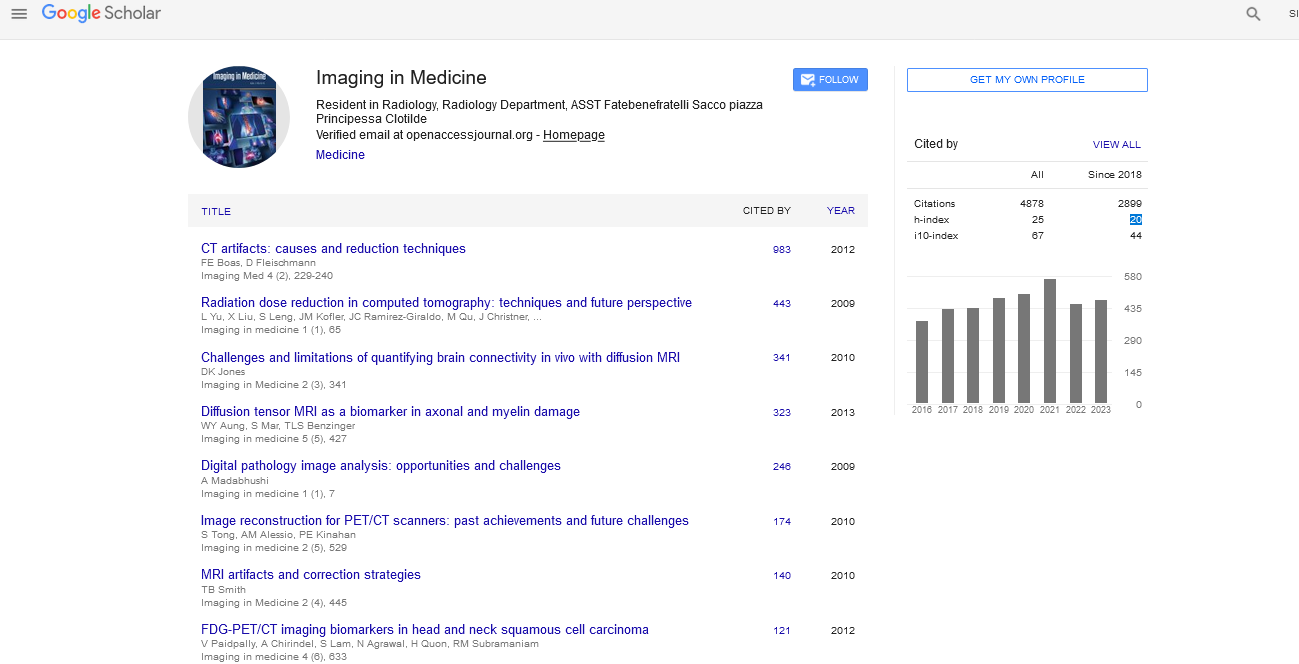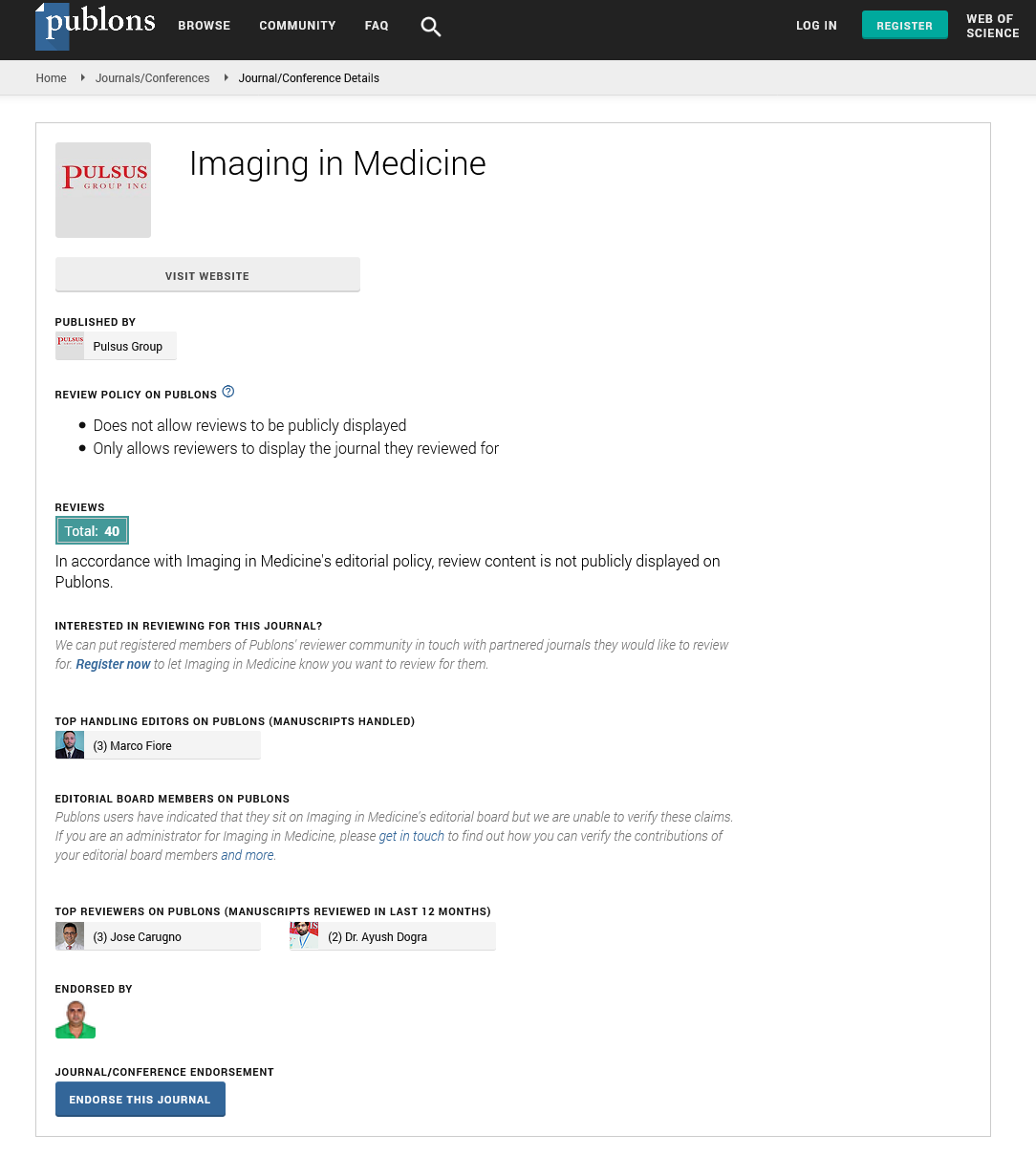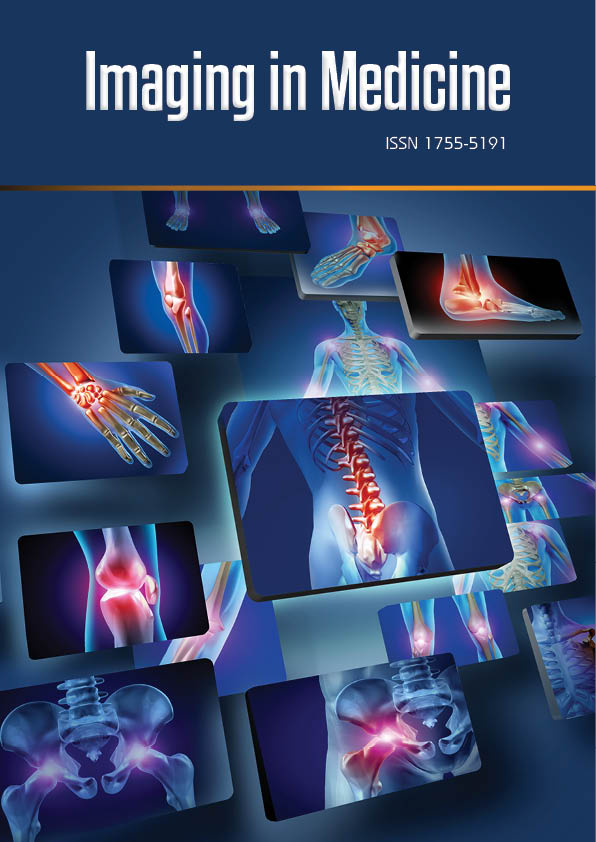Editorial - Imaging in Medicine (2025) Volume 17, Issue 1
Teleradiology: Transforming Medical Imaging in the Digital Age
Leonardo Ciprian*
Department of Radiology, Athinoula A. Martinos Center for Biomedical Imaging, Harvard Medical School, Boston, United States
- *Corresponding Author:
- Leonardo Ciprian
Department of Radiology, Athinoula A. Martinos Center for Biomedical Imaging, Harvard Medical School, Boston, United States
E-mail: leo_ciprian@gmail.com
Received: 17-Jan-2024, Manuscript No. fmim- 25-169972; Editor assigned: 20-Jan-2024, PreQC No. fmim-25-169972 (PQ); Reviewed: 04-October-2024, QC No. fmim-25-169972; Revised: 14-Jan-2024, Manuscript No. fmim- 25-169972 (R); Published: 21-Jan-2024, DOI: 10.47532/1755-5191.2025.17(1).1-3
Introduction
Teleradiology is the transmission of radiological images—such as X-rays, CT scans, and MRIs—from one location to another for interpretation and diagnosis [1]. By combining medical imaging with telecommunication technology, teleradiology bridges the gap between patients and radiologists, allowing medical expertise to be shared across distances. This innovation has become increasingly vital in modern healthcare, especially in rural or underserved regions where access to radiology specialists may be limited.
How Teleradiology Works
The process of teleradiology begins with the acquisition of medical images at a hospital, clinic, or diagnostic center [2]. These images are digitized and securely transmitted over the internet using specialized software that complies with healthcare privacy standards. Radiologists at remote locations receive the images, analyze them, and send reports back to the referring physicians. Advanced encryption and cloud-based systems ensure data security and timely access, while integration with hospital information systems streamlines workflows.
Applications of Teleradiology
Teleradiology serves a wide range of clinical and operational purposes:
Emergency Services: Hospitals without 24/7 radiology coverage can rely on teleradiology for urgent reads of trauma scans, strokes, or internal bleeding cases [3].
Rural Healthcare: Clinics in remote areas can access the expertise of specialized radiologists without requiring patients to travel long distances.
Subspecialty Consultation: Teleradiology allows hospitals to seek opinions from experts in neuroradiology, pediatric radiology, or musculoskeletal imaging.
Nighttime Coverage: Many facilities use teleradiology for after-hours interpretation, ensuring continuous care without overburdening local staff.
Education and Collaboration: Radiology trainees and professionals benefit from remote consultations and case-sharing with global experts.
Advantages of Teleradiology
The popularity of teleradiology is driven by its numerous benefits:
Improved Access to Care: Patients in underserved regions can receive timely imaging diagnoses.
Faster Turnaround: Reports can be generated quickly, improving treatment decisions in emergencies.
Cost-Effective: Hospitals can optimize staffing and reduce the need for full-time, on-site specialists.
Global Expertise: Healthcare providers can connect with radiologists across borders for second opinions and complex cases [4].
Work-Life Balance for Radiologists: Remote work options make the profession more flexible.
Challenges and Limitations
Despite its promise, teleradiology faces several challenges:
Data Security and Privacy: Transmitting sensitive patient data requires strict adherence to HIPAA and other international standards.
Quality of Interpretation: Image quality, internet speed, and time zone differences can sometimes delay or affect accuracy.
Licensing and Regulation: Radiologists providing services across states or countries must comply with local licensing laws, which can be complex.
Dependence on Technology: Teleradiology requires reliable infrastructure, which may not always be available in low-resource settings.
Reduced Patient Interaction: Radiologists may have limited opportunities to directly interact with patients, which could affect personalized care [5].
The Future of Teleradiology
Technological advancements are rapidly shaping the future of teleradiology. Artificial Intelligence (AI) is being integrated to pre-screen images, flag abnormalities, and assist radiologists in prioritizing urgent cases. Cloud-based platforms are making collaboration between hospitals and radiologists more seamless, while mobile applications are improving accessibility. In the future, virtual reality and advanced image-sharing tools may enable even closer real-time collaboration between radiologists and clinicians worldwide. As demand for imaging grows, teleradiology will continue to evolve into an essential component of global healthcare systems.
Conclusion
Teleradiology has redefined how medical imaging is delivered and interpreted, breaking down geographical barriers and bringing specialized expertise to where it is needed most. From improving emergency care to expanding access in remote areas, it has become an integral part of modern healthcare. While challenges such as data security and regulatory hurdles remain, ongoing technological innovations promise to make teleradiology faster, safer, and more efficient. As healthcare continues to embrace digital transformation, teleradiology will remain a vital bridge connecting patients, physicians, and radiologists across the world.
References
- Kato H, Nakajima M (2013) Treatments for esophageal cancer: a review. Gen Thorac Cardiovasc Surg 61: 330-335.
- Then EO, Lopez M, Saleem S, Gayam V, Sunkara T, et al. (2020) Esophageal Cancer: An Updated Surveillance Epidemiology and End Results Database Analysis. World J Oncol 11: 55-64.
- Jeffrey PD, Russo AA, Polyak K, Gibbs E, Hurwitz J, et al. (1995) Mechanism of CDK activation revealed by the structure of a cyclinA-CDK2 complex. Nature 376: 313-320.
- Pagano M (2004) Control of DNA synthesis and mitosis by the Skp2-p27-Cdk1/2 axis. Mol Cell 14: 414-416.
- Odle RI, Walker SA, Oxley D, Kidger AM, Balmanno K, et al. (2020) An mTORC1-to-CDK1 Switch Maintains Autophagy Suppression during Mitosis. Mol Cell 77: 228-240 e227.
Google Scholar, Crossref, Indexed at
Google Scholar, Crossref, Indexed at
Google Scholar, Crossref, Indexed at
Google Scholar, Crossref, Indexed at


